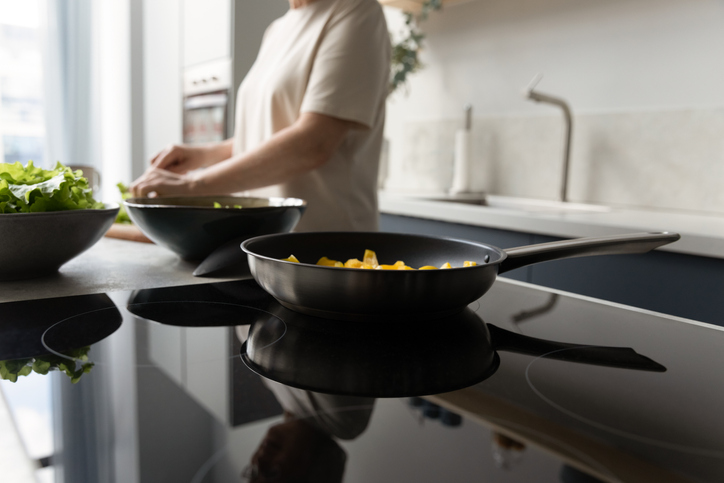Real-Life Experience with Cast Iron on Induction: A BBQ Enthusiast's Perspective
Written By James Morgan
For many barbecue enthusiasts, the allure of cooking with cast iron is undeniable. The robust, rustic feel of a cast iron skillet or griddle, combined with its superior heat retention, makes it a favorite tool for grilling aficionados. But what happens when you introduce the modern marvel of induction cooking into the mix? This article delves into the real-life experience with cast iron on induction, exploring the benefits, challenges, and tips for achieving that perfect sear and sizzle.

The Intersection of Tradition and Technology
Traditionally, cast iron cookware has been a staple on open flames and conventional stovetops. Its ability to reach high temperatures and maintain consistent heat is unmatched, making it ideal for searing meats to perfection. However, the introduction of induction cooking technology has raised questions about compatibility and performance. Can the old-world charm of cast iron truly thrive in a modern kitchen? The answer, as many have discovered, is a resounding yes.
Why Cast Iron Works on Induction
Induction cooking relies on electromagnetic fields to generate heat directly in the cookware, making it highly efficient. Fortunately, cast iron is ferrous, meaning it contains iron, which is a key requirement for induction compatibility. This makes it possible to enjoy the benefits of both worlds: the efficiency of induction and the exceptional cooking qualities of cast iron.
Benefits of Using Cast Iron on Induction
One of the standout advantages of using cast iron on induction is the rapid and even heating it provides. Induction cooktops heat the cookware almost instantly, allowing for precise temperature control. This is particularly beneficial for barbecue enthusiasts who strive for the perfect sear on steaks or a crispy crust on burgers.
Moreover, the superior heat retention of cast iron complements the quick responsiveness of induction, maintaining consistent cooking temperatures even after the heat source is turned off. This ensures that your meats are cooked evenly, and flavors are enhanced.
Overcoming Challenges
While the synergy between cast iron and induction is impressive, there are a few challenges to consider. The weight of cast iron can be a concern, especially on glass-topped induction stoves, where scratches can occur if the cookware is dragged or handled roughly. It's crucial to lift the cookware when moving it and to use a protective mat if necessary.
Another consideration is the initial learning curve. Cooking with cast iron on induction requires a bit of experimentation to find the perfect balance of temperature and cooking time, but once mastered, the results are unparalleled.
Expert Tips for Success
To make the most of your cast iron on induction cooking experience, here are some expert tips:
- Preheat Gradually: Allow your cast iron to heat gradually on a low setting before increasing the temperature. This prevents warping and ensures even heating.
- Use the Right Size: Ensure your cast iron cookware matches the size of the induction burner to optimize efficiency.
- Maintain Seasoning: Regularly season your cast iron to maintain its non-stick properties and prevent rust.
For more insights on the benefits of cast iron for induction cooking, you can explore this guide.
Real-Life Stories from Barbecue Enthusiasts
Many barbecue enthusiasts have shared their real-life experiences with cast iron on induction, highlighting its versatility and effectiveness. From perfectly seared steaks to evenly cooked vegetables, the feedback is overwhelmingly positive.
One enthusiast mentioned, 'Using cast iron on my induction cooktop has revolutionized my barbecue game. The precise temperature control allows me to achieve the perfect char on my meats without burning them.' Another added, 'I was skeptical at first, but now I can't imagine cooking on anything else. The even heat distribution is incredible.'
For a detailed exploration of everyday cooking with cast iron on induction, consider reading this article.
Conclusion
In conclusion, the real-life experience with cast iron on induction is a testament to the perfect marriage of tradition and technology. For barbecue enthusiasts, it opens up a world of culinary possibilities, combining the time-honored qualities of cast iron with the modern efficiency of induction cooking.
With the right techniques and a bit of experimentation, anyone can master the art of cooking with cast iron on induction, achieving mouthwatering results every time. Whether you're a seasoned grill master or a novice cook, this combination is sure to elevate your barbecue experience.
For more information on how induction cooktops work with cast iron pans, check out this article.

FAQs
Can you use any cast iron pan on an induction cooktop?
Yes, as long as the cast iron pan is in good condition and has a flat bottom, it should work well on an induction cooktop. For more insights, read this guide.
Will cast iron scratch my induction cooktop?
While cast iron is heavy and can potentially scratch the glass surface of an induction cooktop, careful handling and using a protective mat can prevent this issue. More tips are available here.
Is cooking with cast iron on induction efficient?
Yes, cooking with cast iron on induction is highly efficient due to the rapid and even heating properties of both materials. For more on the efficiency of cast iron on induction, visit this article.



